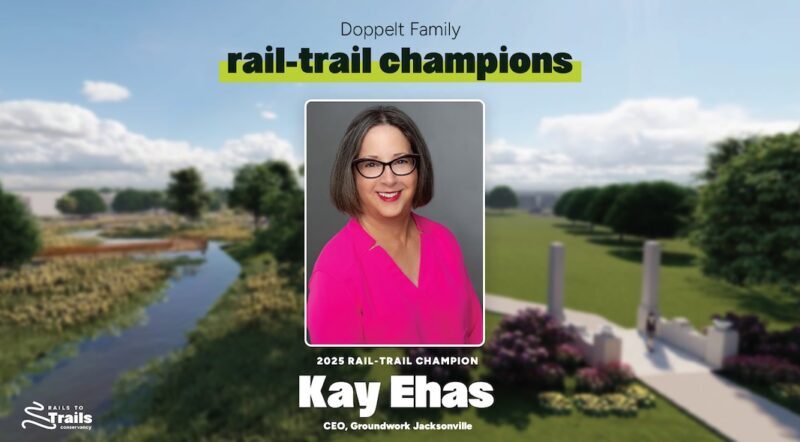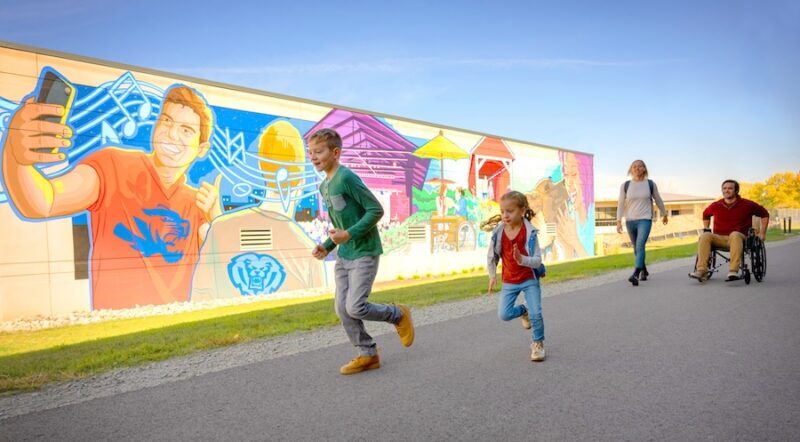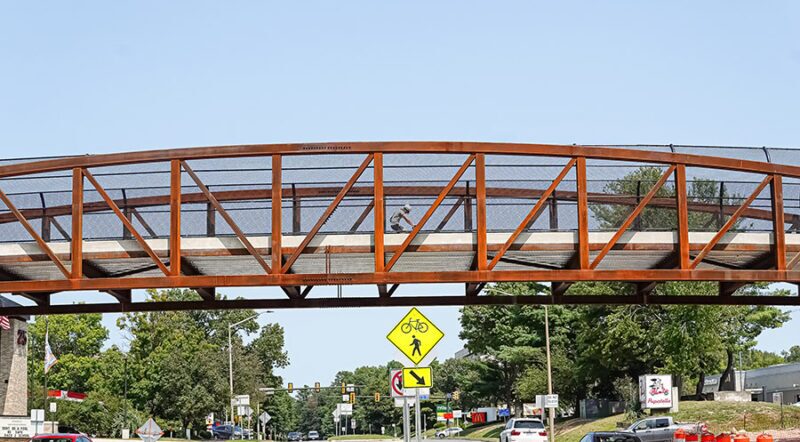USDOT Doubles Down on Connected Walking and Biking Infrastructure as Essential to America’s Mobility

FOR IMMEDIATE RELEASE: Mar. 14, 2024
CONTACT: Patricia Brooks, patricia@matchmapmedia.com, 202.351.1757
USDOT Doubles Down on Connected Walking and Biking Infrastructure as Essential to America’s Mobility
Over $830 million in one-time funding awarded through the Reconnecting Communities and Neighborhoods program will advance projects that focus solely on creating important trail, walking and biking connections in rural, suburban and urban America.
WASHINGTON—The U.S. Department of Transportation (USDOT) emphasized the importance of connected walking and biking infrastructure to provide equitable access and opportunity for communities across the country with the projects it funded under the one-time Reconnecting Communities and Neighborhoods grant program, according to Rails to Trails Conservancy, the nation’s largest trails, walking and biking advocacy organization.
Projects focused solely on trails, walking and biking accounted for $834 million or 25% of the total $3.3 billion in funding. 85% of all of the 132 projects include elements that account for active transportation—bringing to light the depth of demand for this infrastructure nationwide.
“USDOT is making precedent-setting strides through its recent grantmaking to advance trails, walking and biking as essential to connect people to opportunities and provide equitable transportation options in communities of all sizes,” said Kevin Mills, RTC’s vice president of policy. “This is the largest one-time federal investment in active transportation infrastructure that’s ever been made, and it will make it safer and more convenient for people from places all across America to walk and bike where they need to go.”
Included among the grants are projects that showcase the outsized impact that large-scale federal investments can have in creating connected trail and active transportation networks.
For example, a $24 million grant in Montana will close trail gap #77 in the Great American Rail-Trail®, the nation’s first cross-country walking and biking route that will be entirely separated from vehicle traffic, creating new connections between urban East Missoula and rural Sha-Ron and Marshall, which have been cut off from one another due to a lack of safe walking and biking facilities and physical barriers created by Highway 200 and the railroad overpass. The Pyramid Lake Paiute Tribe in Nevada will use its $29 million grant for the Pyramid Lake Paiute Tribe Bike Path, creating a new multimodal facility to connect within and between tribal communities. And in Hawaii, Honolulu’s $19 million grant will build a pedestrian bridge to connect a historically underserved community to a new rail transit station, creating safe multimodal connectivity and bridging first and last mile gaps.
This week’s announcement underscores a trend that has emerged since the creation of new multimodal infrastructure programs through the Bipartisan Infrastructure Law. Active transportation infrastructure—especially projects that build connectivity between people and the places they want to go in their communities—have consistently captured a sizeable portion of investment across programs like RAISE, Safe Streets and Roads for All, and Reconnecting Communities. The scale of this investment and the strength of still unfunded projects illustrate the massive demand for connected trail and active transportation networks in all types of communities. The prioritization process shows the high return on investment from such projects and the value that USDOT is placing on this infrastructure to deliver a transportation system that is sustainable, safe and equitable.
“The investments that DOT has made in walking and biking infrastructure are remarkable, and they reinforce what we’ve long known—active transportation is a fundamental component of a healthy, sustainable transportation system that meets the mobility needs of all Americans,” said Mills. “But one-time investments only get us so far. Nationwide, there are hundreds of trail and active transportation networks under development and they are in every state. We need ongoing, dedicated funding like what the Active Transportation Infrastructure Investment Program will provide to ensure communities can continue to fill gaps in these active transportation systems, making it safer and more convenient for people to walk and bike where they need to go.”
The Active Transportation Infrastructure Investment Program (ATIIP) is a new program that provides dedicated funding for the planning and construction of safe and connected active-transportation networks and long-distance spine trails. The program was authorized in the Bipartisan Infrastructure Law and received its first appropriation in the Fiscal Year 2023 federal funding bill. The first grant opportunity is expected to be announced later this month. RTC, Congressional champions and partners across the country are continuing to advocate for full program funding in the FY 2025 federal budget. Learn more about the demand for trails, walking and biking infrastructure and available federal funding at railstotrails.org/funding.
Rails-to-Trails Conservancy is the nation’s largest trails organization—with a grassroots community more than 1 million strong—dedicated to building a nation connected by trails, reimagining public spaces to create safe ways for everyone to walk, bike and be active outdoors. Connect with RTC at railstotrails.org and @railstotrails on Facebook, X (formerly Twitter) and Instagram.

Donate
Everyone deserves access to safe ways to walk, bike, and be active outdoors.


